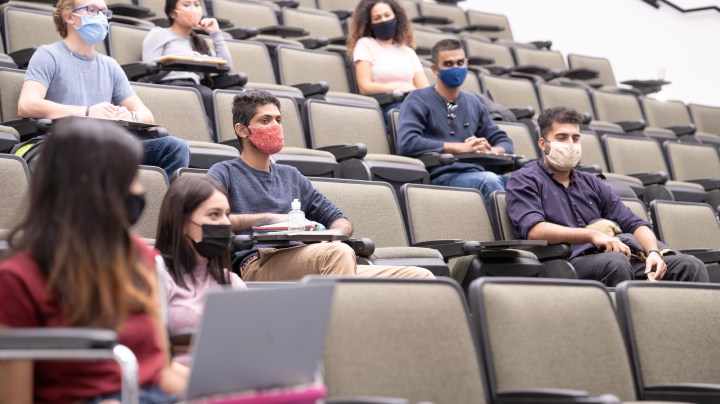
Community colleges hit hardest by higher-ed enrollment slump
Community colleges hit hardest by higher-ed enrollment slump

Last fall, the number of students enrolling in U.S. colleges fell by about 3%, or nearly 500,000, according to new data from the National Student Clearinghouse Research Center.
Over the last two years, since the pandemic began, roughly 1 million fewer students have enrolled in college.
There have been drops across the board, but community colleges have been the hardest hit. Their enrollment is down more than 13% in the last two years.
“That is a tremendous amount of students,” said MorraLee Keller of the nonprofit National College Attainment Network.
Most notably, “we’re seeing drops in enrollment in low-income and first-generation students.”
Students who, of course, already faced hurdles in applying for and going to college before the pandemic.
Shalema Henderson works with low-income and first-generation students in New York City through the nonprofit College Access: Research and Action. “Those students are less likely to go because there’s more barriers,” she said.
The barriers have only become bigger in the last two years, Henderson added.
“Students have had to do more at home, or had to pick up more responsibilities, or are reconsidering college, or wanting to wait until things are in person,” she said.
Some low-income students whose families are struggling financially because of the pandemic have also decided to work and make money instead of spending money to go to college, Henderson said — at least for now.
Plus, for many students, having so much of their junior and senior years of high school be virtual has been hugely disruptive, according to Shirley Collado, president and CEO of the nonprofit College Track.
“You’re talking about students who could not get instruction, could not be on a computer, did not have access to food or housing in some circumstances,” she said.
Without access to in-person support from teachers and college counselors, a lot of those students have struggled to navigate the application process.
So far this year, the number of students who have filled out the Free Application for Federal Student Aid — which is required if you want financial aid — is about the same as it was at this time last year.
Not worse. But not better, either.
There’s a lot happening in the world. Through it all, Marketplace is here for you.
You rely on Marketplace to break down the world’s events and tell you how it affects you in a fact-based, approachable way. We rely on your financial support to keep making that possible.
Your donation today powers the independent journalism that you rely on. For just $5/month, you can help sustain Marketplace so we can keep reporting on the things that matter to you.











